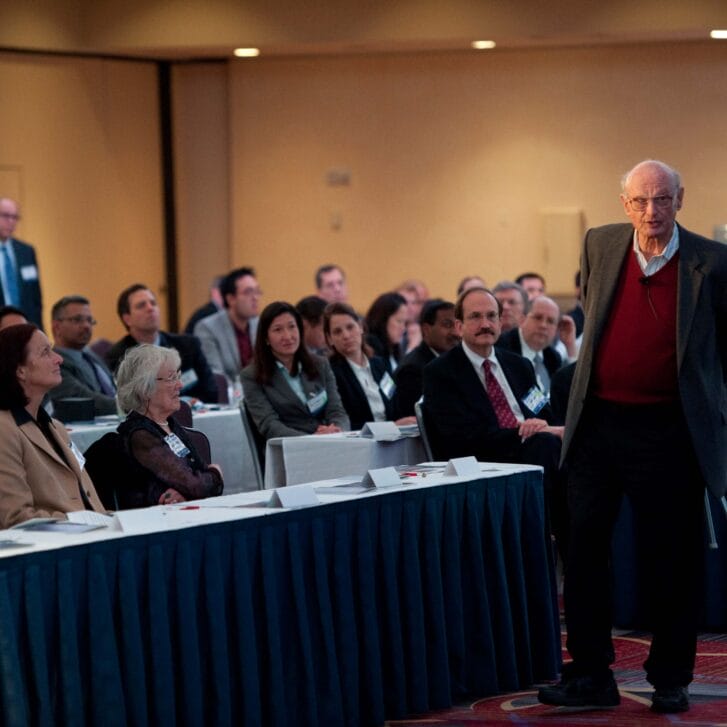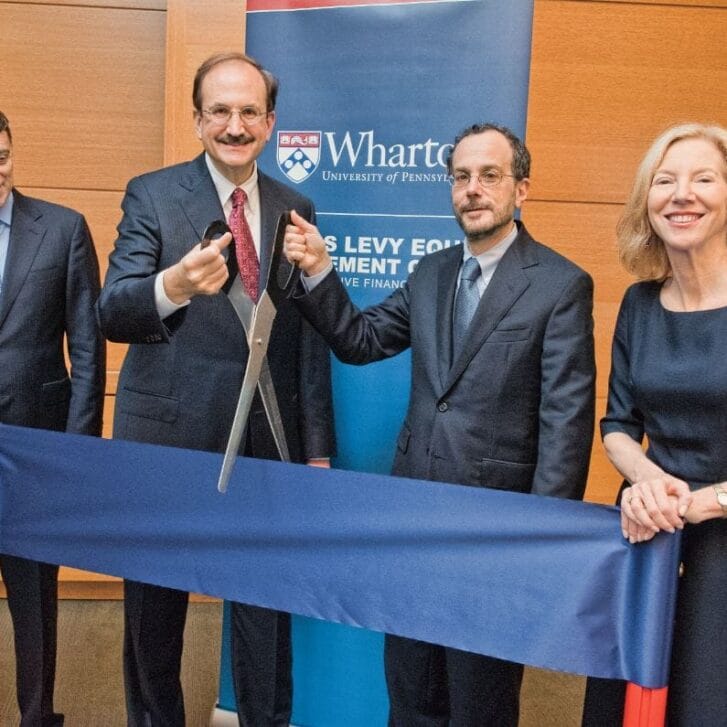How much is customer satisfaction worth? A lot. Just look at two communications industries: telephones and the Internet.
 In spite of the new era of open competition, some phone companies have taken a don’t-call-us, we’ll-call-you approach to customers, many of whom refuse to sit idly by the phone, waiting for more customer-friendly service. Instead, long-distance customers are migrating in a quest for better service. From 1996 to 1998, 35.3 million long-distance customers — representing more than a third of the nation’s 100 million households — switched long-distance carriers at least once partly due to customer dissatisfaction, according to industry sources. Internet service provider customers are even more dissatisfied. An estimated 40 percent of customers who change Internet service providers do so because of “poor service.”
In spite of the new era of open competition, some phone companies have taken a don’t-call-us, we’ll-call-you approach to customers, many of whom refuse to sit idly by the phone, waiting for more customer-friendly service. Instead, long-distance customers are migrating in a quest for better service. From 1996 to 1998, 35.3 million long-distance customers — representing more than a third of the nation’s 100 million households — switched long-distance carriers at least once partly due to customer dissatisfaction, according to industry sources. Internet service provider customers are even more dissatisfied. An estimated 40 percent of customers who change Internet service providers do so because of “poor service.”
Every manager knows contented customers influence purchasing behavior and customer growth. And now there’s a measure of how customer satisfaction affects stock price as well. Using data from the American Customer Satisfaction Index, researchers at Wharton found that a one-unit rise or fall in customer satisfaction ratings, measured on a 1-100 scale, translated to a $250 million rise or fall in stock market value.
This stunning bit of news may press every manager to master the tools of good listening in a hurry. Because when it comes to their customers, too many managers don’t seem to hear very well. They make serious mistakes in how they conduct and analyze marketing research. They overlook simple solutions to customer issues because they can’t and don’t hear what customers would tell them, given the right opportunity, the right setting and the right questions.
Further, most executives are baffled by the information collected from focus groups, highly structured one-on-one interviews and other qualitative research methods. As a result, few are able to translate research results into effective corporate strategy.
After studying problems experienced by managers in various industries, we have formulated five ground rules executives can use to improve their customer-listening skills.
![]() You already know 85 percent; the other 15 percent is the “ah-ha factor.” Experience matters. It enables executives to take as much action as is dictated by the knowledge they possess. But what is really needed is the extra 15 percent of information that sophisticated qualitative research and analysis provides. Customers of an industrial manufacturer, for example, said they wanted a “partnering relationship.” Management assumed this meant “give the customer a good deal” and “know what they want when they want it.” Only when asked to define “partnering relationship” did their customers explain they wanted a sales representative who “understands their business and provides advice on how best to operate the industrial equipment.” By making changes in how its sales force is trained, the company saw a tremendous increase in long-term customers and substantial improvements in market share as well.
You already know 85 percent; the other 15 percent is the “ah-ha factor.” Experience matters. It enables executives to take as much action as is dictated by the knowledge they possess. But what is really needed is the extra 15 percent of information that sophisticated qualitative research and analysis provides. Customers of an industrial manufacturer, for example, said they wanted a “partnering relationship.” Management assumed this meant “give the customer a good deal” and “know what they want when they want it.” Only when asked to define “partnering relationship” did their customers explain they wanted a sales representative who “understands their business and provides advice on how best to operate the industrial equipment.” By making changes in how its sales force is trained, the company saw a tremendous increase in long-term customers and substantial improvements in market share as well.
![]() Don’t believe the results of every focus group. Actual customer purchasing decisions are not made in the laboratory setting of a focus group. Despite their best efforts, focus group moderators introduce their own biases or respond more positively to those who give the most data. Participants are inhibited by other members of the group, or by the knowledge that company representatives may be watching behind one-way glass. Groups tend to drift toward the strongest voice despite moderators’ attempts to involve everyone. Thus, results can be misleading. When a focus group at a financial services firm yielded no new information other than a discussion about a problem encountered by a single participant, only later examination of the transcript revealed that the moderator exacerbated the situation by asking more questions about the problem. Additional surveys showed that the problem raised had been an anomaly affecting only a handful of customers.
Don’t believe the results of every focus group. Actual customer purchasing decisions are not made in the laboratory setting of a focus group. Despite their best efforts, focus group moderators introduce their own biases or respond more positively to those who give the most data. Participants are inhibited by other members of the group, or by the knowledge that company representatives may be watching behind one-way glass. Groups tend to drift toward the strongest voice despite moderators’ attempts to involve everyone. Thus, results can be misleading. When a focus group at a financial services firm yielded no new information other than a discussion about a problem encountered by a single participant, only later examination of the transcript revealed that the moderator exacerbated the situation by asking more questions about the problem. Additional surveys showed that the problem raised had been an anomaly affecting only a handful of customers.
![]() Don’t be fooled just because you have quantitative data. A survey that asks poor questions yields equally poor results. Executives at a leasing company, for example, in survey after survey found no evidence that customers were unhappy with the billing system. However, billing complaints were the norm. Secure in the survey results, the company did nothing to change the system. Over time, when other initiatives failed to make a significant difference in customer satisfaction and the company began to lose regular customers to competitors, comprehensive qualitative interviewing showed why. Customers, unprompted, overwhelmingly said the billing system was “one of the worst.” They elaborated on the system’s faults and were specific about problems. They even made suggestions for improvements. These were complaints management couldn’t hear in the original survey, a canned questionnaire for businesses. It had asked the wrong questions, probing for billing “timeliness” and “regularity,” issues customers had not perceived as problems. In correcting its billing system, the company saw a substantial increase in customer satisfaction and, more importantly, it gained an increased amount of business from customers who had been taking their business elsewhere.
Don’t be fooled just because you have quantitative data. A survey that asks poor questions yields equally poor results. Executives at a leasing company, for example, in survey after survey found no evidence that customers were unhappy with the billing system. However, billing complaints were the norm. Secure in the survey results, the company did nothing to change the system. Over time, when other initiatives failed to make a significant difference in customer satisfaction and the company began to lose regular customers to competitors, comprehensive qualitative interviewing showed why. Customers, unprompted, overwhelmingly said the billing system was “one of the worst.” They elaborated on the system’s faults and were specific about problems. They even made suggestions for improvements. These were complaints management couldn’t hear in the original survey, a canned questionnaire for businesses. It had asked the wrong questions, probing for billing “timeliness” and “regularity,” issues customers had not perceived as problems. In correcting its billing system, the company saw a substantial increase in customer satisfaction and, more importantly, it gained an increased amount of business from customers who had been taking their business elsewhere.
![]() What may go unsaid is often critical information. Even when companies do perform qualitative research, the interviews themselves are often so highly structured that they do not always allow customers to raise issues. A large hotel and casino chain, for example, noticed that daytime gambling by retirees had sharply declined over a period of four months. Slot machine and restaurant usage had hit an all-time seasonal low. Surveys were used to detect discontent, but were unable to identify its cause. In open-ended, qualitative interviews, however, customers discussed what they had not been asked to address before: anger over the removal of shrimp from the daily, all-you-can-eat buffet in the chain’s restaurant. Customers viewed the menu change as an effort to boost profits at the expense of customer service. The customers reported they had not stopped coming to the establishment entirely, but they had gone elsewhere in search of a better buffet. Since casino customers — particularly older people — often play where they eat, slot machine usage saw a sharp decline. When executives realized their mistake, the shrimp was reinstated, customer satisfaction scores rose and bottom-line results in both the casino and restaurants showed impressive gains.
What may go unsaid is often critical information. Even when companies do perform qualitative research, the interviews themselves are often so highly structured that they do not always allow customers to raise issues. A large hotel and casino chain, for example, noticed that daytime gambling by retirees had sharply declined over a period of four months. Slot machine and restaurant usage had hit an all-time seasonal low. Surveys were used to detect discontent, but were unable to identify its cause. In open-ended, qualitative interviews, however, customers discussed what they had not been asked to address before: anger over the removal of shrimp from the daily, all-you-can-eat buffet in the chain’s restaurant. Customers viewed the menu change as an effort to boost profits at the expense of customer service. The customers reported they had not stopped coming to the establishment entirely, but they had gone elsewhere in search of a better buffet. Since casino customers — particularly older people — often play where they eat, slot machine usage saw a sharp decline. When executives realized their mistake, the shrimp was reinstated, customer satisfaction scores rose and bottom-line results in both the casino and restaurants showed impressive gains.
![]() The ways in which customers state things are as important as the words they use. When qualitative research is not analyzed properly, the real substance of the interview — the actual words, phrases and metaphors that customers use — can get lost. Messages can be missed. In qualitative research developed for an investment firm, for example, customers consistently speak of their satisfaction in terms of the overall relationship they have with the people in the company. They view the relationship on a personal level. It is intimate. Like a personal relationship, it evolves over time. Potential customers view this progression as critical to choosing and establishing long-term relationships. Knowledge of the current stage of the relationship and identification of the information needs of the customers could then be used by representatives of this firm to make more tailored and, thus, more effective sales calls to their customers. Without sophisticated qualitative analysis that identified and preserved the language of the customer, this information would have been lost. The lessons are clear for those who will listen and hear: Qualitative research and analysis of what customers say generates real economic value.
The ways in which customers state things are as important as the words they use. When qualitative research is not analyzed properly, the real substance of the interview — the actual words, phrases and metaphors that customers use — can get lost. Messages can be missed. In qualitative research developed for an investment firm, for example, customers consistently speak of their satisfaction in terms of the overall relationship they have with the people in the company. They view the relationship on a personal level. It is intimate. Like a personal relationship, it evolves over time. Potential customers view this progression as critical to choosing and establishing long-term relationships. Knowledge of the current stage of the relationship and identification of the information needs of the customers could then be used by representatives of this firm to make more tailored and, thus, more effective sales calls to their customers. Without sophisticated qualitative analysis that identified and preserved the language of the customer, this information would have been lost. The lessons are clear for those who will listen and hear: Qualitative research and analysis of what customers say generates real economic value.
David Larcker is the Ernst & Young LLP Professor of Accounting. Pamela Cohen is a principal at Sibson & Company.
























